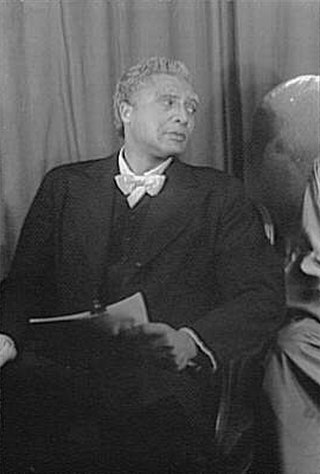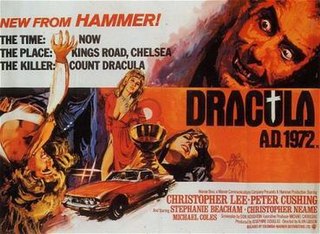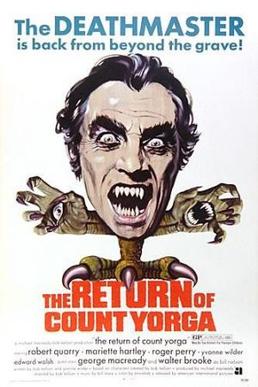American International Pictures LLC is an American film production company owned by Amazon MGM Studios. In its original operating period, AIP was an independent film production and distribution company known for producing and releasing films from 1955 until 1980, a year after its acquisition by Filmways in 1979.

Jackie Brown is a 1997 American crime film written and directed by Quentin Tarantino, based on the 1992 novel Rum Punch by Elmore Leonard. It stars Pam Grier as Jackie Brown, a flight attendant who smuggles money between the United States and Mexico. Samuel L. Jackson, Robert Forster, Bridget Fonda, Michael Keaton, and Robert De Niro appear in supporting roles.

Child's Play 2 is a 1990 American supernatural slasher film and the direct sequel to Child's Play, written by Don Mancini and directed by John Lafia, one of the co-writers of the first film. It is the second installment in the Child's Play franchise and set two years after the first film; the plot follows Charles Lee Ray continuing his pursuit for Andy Barclay, who was placed in foster care, and transferring his soul into him after being resurrected. Alex Vincent and Brad Dourif reprised their roles while Christine Elise, Jenny Agutter, Gerrit Graham and Grace Zabriskie joined the cast.

Pamela Suzette Grier is an American actress and singer. Described by many as cinema's first female action star, she achieved fame for her starring roles in a string of 1970s action, blaxploitation and women in prison films for American International Pictures and New World Pictures. Her accolades include nominations for an Emmy Award, a Golden Globe Award, a Screen Actors Guild Award, a Satellite Award and a Saturn Award.

William Horace Marshall was an American actor, director and opera singer. He played the title role in the 1972 blaxploitation classic Blacula and its sequel Scream Blacula Scream (1973), and appeared as the King of Cartoons on the 1980s television show Pee-wee's Playhouse and as Dr. Richard Daystrom on the Star Trek television series. He was 6‘5” tall and was known for his bass voice.

Shaft in Africa is a 1973 American blaxploitation film directed by John Guillermin, and the third film of the Shaft series, starring Richard Roundtree as John Shaft. Stirling Silliphant wrote the screenplay. The film's budget was $1.5 million, but the film was a box office flop, grossing just $1 million. Metro-Goldwyn-Mayer quickly sold the property to television, but the television series was cancelled after just seven episodes.

Foxy Brown is a 1974 American blaxploitation film written and directed by Jack Hill. It stars Pam Grier as the title character who takes on a gang of drug dealers who killed her boyfriend. The film was released by American International Pictures as a double feature with Truck Turner. The film uses Afrocentric references in clothing and hair. Grier starred in six blaxploitation films for American International Pictures.

Coffy is a 1973 American blaxploitation film written and directed by Jack Hill. The story is about a black female vigilante played by Pam Grier who seeks violent revenge against a heroin dealer responsible for her sister's addiction.

Blacula is a 1972 American blaxploitation vampire horror film directed by William Crain. It stars William Marshall in the title role about an 18th-century African prince named Mamuwalde, who is turned into a vampire by Count Dracula in the Count's castle in Transylvania in the year 1780 after Dracula refuses to help Mamuwalde suppress the slave trade.

Sheba, Baby is a 1975 American blaxploitation action film directed by William Girdler and starring Pam Grier and Austin Stoker.

The Thing with Two Heads is a 1972 American blaxploitation science fiction comedy film directed by Lee Frost and starring Ray Milland, Rosey Grier, Don Marshall, Roger Perry, Kathy Baumann, and Chelsea Brown.

Count Yorga, Vampire is a 1970 American vampire horror film written and directed by Bob Kelljan and starring Robert Quarry, Roger Perry and Michael Murphy. It was followed by a sequel, The Return of Count Yorga.

Dracula A.D. 1972 is a 1972 British horror film, directed by Alan Gibson and produced by Hammer Film Productions. It was written by Don Houghton and stars Christopher Lee, Peter Cushing and Stephanie Beacham. Unlike earlier films in Hammer's Dracula series, Dracula A.D. 1972 had a contemporary setting in an attempt to update the Dracula story for modern audiences. Dracula is brought back to life in modern London and preys on a group of young partygoers that includes the descendant of his nemesis, Van Helsing.

Sugar Hill is a 1974 American horror blaxploitation zombie film, directed by Paul Maslansky and starring Marki Bey as the title character who uses voodoo to get revenge on the people responsible for her boyfriend's death. It was released by American International Pictures. According to the film, the zombies are the preserved bodies of slaves brought to the United States from Guinea. AIP had previously combined the horror and blaxploitation genres with Blacula (1972) and its sequel Scream Blacula Scream (1973).

Robert Walter Quarry was an American actor, known for several prominent horror film roles.

Roger Perry was an American film and television actor whose career began in the late 1950s. He served as an intelligence officer in the United States Air Force during the early 1950s.

The Return of Count Yorga is a 1971 American vampire horror film directed by Bob Kelljan and starring Robert Quarry, Roger Perry, Yvonne Wilder, George Macready in his final film role before his death in 1973, Rudy De Luca, Edward Walsh, and Craig T. Nelson in his feature film debut. It is the sequel to the 1970 film Count Yorga, Vampire.

Blaxploitation is an ethnic subgenre of the exploitation film that emerged in the United States during the early 1970s, when the combined momentum of the civil rights movement, the Black power movement, and the Black Panthers spurred black artists to reclaim power over their image, and institutions like UCLA to provide financial assistance for students of color to study filmmaking. This combined with Hollywood adopting a less restrictive rating system in 1968. The term, a portmanteau of the words "black" and "exploitation", was coined in August 1972 by Junius Griffin, the president of the Beverly Hills–Hollywood NAACP branch. He claimed the genre was "proliferating offenses" to the black community in its perpetuation of stereotypes often involved in crime. After the race films of the 1940s and 1960s, the genre emerged as one of the first in which black characters and communities were protagonists, rather than sidekicks, supportive characters, or victims of brutality. The genre's inception coincides with the rethinking of race relations in the 1970s.

Bluebeard is a 1972 mystery comedy drama film written and directed by Edward Dmytryk and starring Richard Burton, Raquel Welch, Joey Heatherton, and Sybil Danning.
Blaxploitation horror films are a genre of horror films involving mostly black actors. In 1972 director William Crain did the first blaxploitation horror film, Blacula.


















